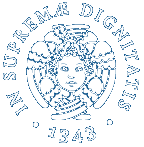2023 - 2025
In corso
Progetti nazionaliArcheologia
Responsabile scientifico nazionale e/o responsabile locale per Pisa Luca Peyronel (PO – Archeologia del Vicino Oriente, Università degli Studi di Milano) Responsabile scientifico locale per Pisa e sostituto PI Anacleto D’Agostino (PA – Archeologia del Vicino Oriente, Università di Pisa)
Silvia Alaura (PR – ISPC CNR, Roma) Federico Manuelli (RIC – ISPC CNR, Roma)
English version
ALandA aims at reconstructing how ancient landscapes of Central Anatolia changed from the 18th to the 13th cent. BC, a five-century period spanning from the end of the political territorial fragmentation of Anatolian principalities to the rise and consolidation of the Hittite empire. The project will investigate developments in material culture, settlement patterns, exploitation of natural resources and connectivity on a regional and interregional scale. The focus will be on the Kayseri and Yozgat provinces, where the relevant 2nd mill. BC key-sites of Kültepe-Kaneš and Uşaklı Höyük, currently investigated by the project’s team members,
are located. The holistic analytical approach aims at providing an innovative praxis-defined method for the characterization of the main geological, physical, geographical and spatial aspects of the Anatolian 2nd mill. BC landscapes. It will allow an overall reconstruction of the transformations of settlement patterns, demographic trends, and spatial relations, as well as resource and material exploitation resulting from the deep socio-economic and political changes that gave way to the rise and development of the Hittite empire. The project will develop a new multivariable approach, with digital datasets easily reusable by other scholars, spurring new research on contexts of south-western Asia and beyond.
The results of ALandA will be promoted through a dissemination plan based on participation in conferences and publication in international peer-reviewed open access journals, as well as the organisation of a workshop and a final conference. Communication of the projects results and dissemination to a wide non-specialist audience will be achieved through a website and a social media outreach strategy.


